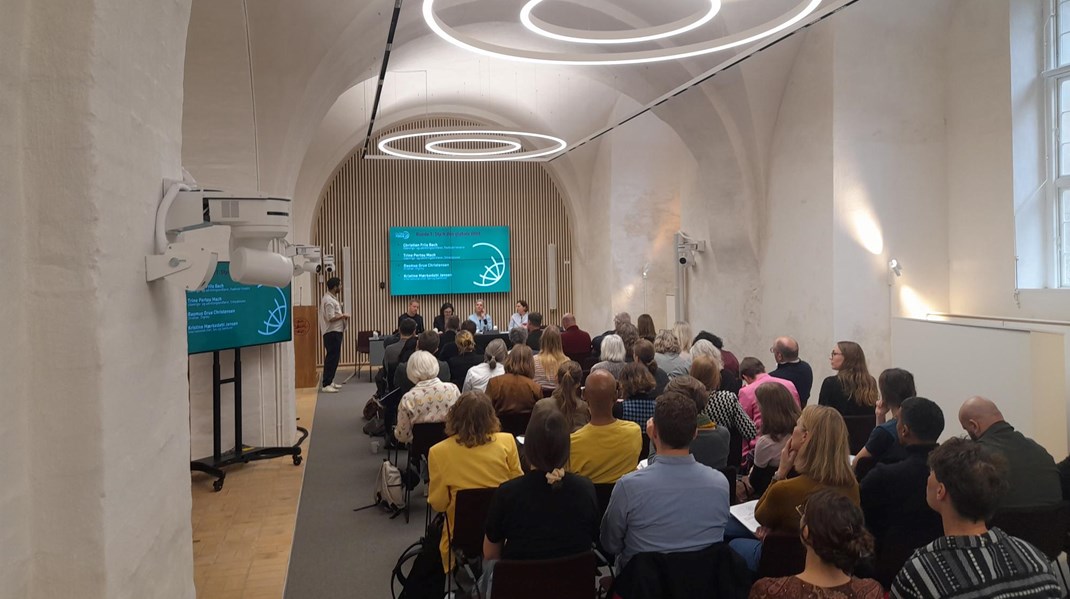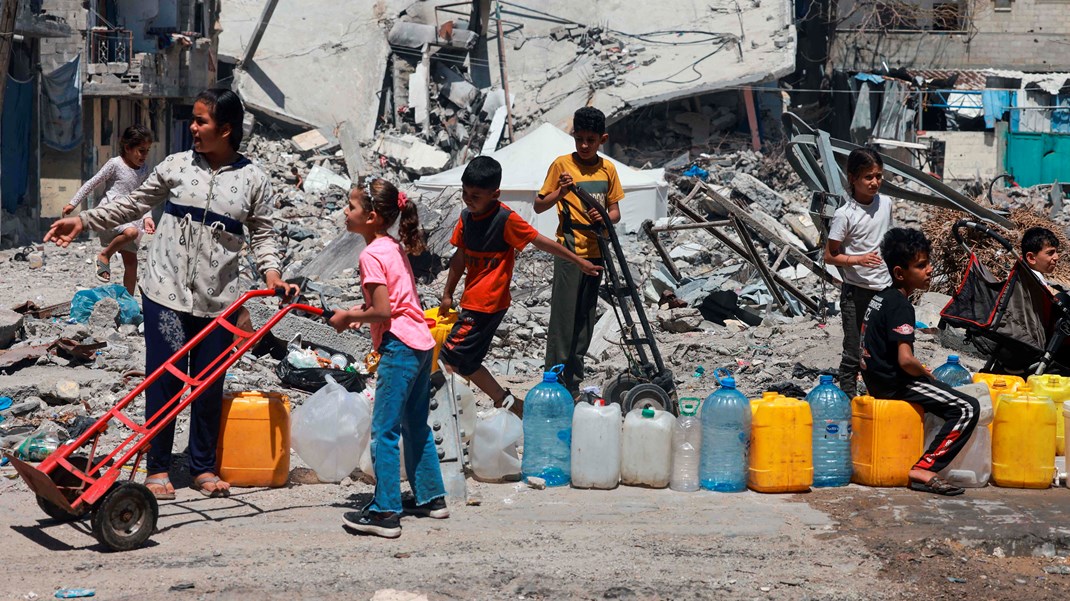In Nigeria, conflict-affected children desperate for education
Pre-school classes for under-fives overwhelmed by hundreds of older children
One school damaged or destroyed every two days
Lake Chad region home to a quarter of world’s out of school children
News comes as UN warns of famine in four countries, including Nigeria
Children as old as 15 are flooding into pre-school facilities in a desperate effort to learn after more than seven years of conflict compounded the world’s worst education crisis in north-east Nigeria, says Save the Children.
A staggering 1,200 schools have been damaged or destroyed whilst at least 611 teachers have been reported murdered and a further 19,000 displaced. This equates to one school being attacked for every two days of the conflict.
More than half of the 700 children attending one Save the Children pre-school programme in Borno State in January 2017 were aged six or older with many teenagers aged up to fifteen. It is symptomatic of an education crisis spread across the Lake Chad region – Nigeria, Niger, Cameroon and Chad – now home to a quarter of the world’s estimated 59 million out-of-school children.
"This desperate quest for education reflects the hunger of children for knowledge that is not being met, which is heart-breaking" said Ben Foot, Save the Children’s Country Director in Nigeria.
“This insurgency is based on an ideology that western education is evil and that children, teachers and schools are all legitimate targets,” she added.
“The consequences have been record lows in enrolment, terrible literacy rates and arguably the worst education crisis in the world. We cannot stand by as an entire generation of children loses its right to go to school.”
Save the Children, whose pre-school facilities are only funded to cater for children under five, says it is adapting its programmes to meet this unexpected demand, but this is only a stop-gap that cannot answer the long term need.
Almost three million conflict-affected children are thought to be in need of education in north-east Nigeria. Even before the start of the conflict, Nigeria had the highest number of out-of-school children in the world at more than 10 million, according to the United Nations.
With a severe shortage of trained teachers, displaced parents like Abu Bakar who fled his own home in Kukuwa - the site of a deadly insurgent attack that killed at least sixty people – now volunteer as a teacher at Save the Children’s early childhood care classes in Madinatu host community.
“There was a school in my village but because of these insurgent attacks it did not have any students or any children learning,” Abu Bakar said.
“Now, I have some children in my class who are older than five or six so I have changed the way I teach,” he added. “I arrange them according to age so I can sit with them and teach them in a way they will understand.”
“A lot of people are becoming aware of the need for education. Some of the children who come here have never been to school. So it makes a difference to the children and for some of them it is the only opportunity they will get [to learn].”
Around 80% of some one million children displaced by the conflict are living in remote host communities with little or no access to education. The situation is particularly dire for girls. While the average Nigerian can expect to receive nine years of schooling, that figure drops to just two years for girls in the north-east.
Fifteen year-old Zainab lost her brother during an insurgent attack on her village, forcing her to flee the region and drop out of school. She has been attending Save the Children emergency pre-school classes in Borno State for the last five months.
“I learn English words like ‘hospital’, ‘wagon’, ‘dog’ and ‘window’,” she said. “I feel sad because if this hadn’t happened I would be finishing school by now. Some of the children who were in the same school as me have been able to go back and are finished now.”
Despite the grave need, education has borne the brunt of a woeful lack of funding for the Lake Chad Crisis. At the end of 2016, education funding for the crisis in north-east Nigeria stood at just 18% of total humanitarian funding despite Nigerian IDPs reporting education to be one of the least accessible services. Education funding asks have more than doubled from 2016 to 2017.
A major international donor conference taking place in Oslo tomorrow is an opportunity to provide much-needed funds to get more children back into school. The conference comes as the United Nations warns of the threat of famine in four countries, including Nigeria.
“Whilst the rate of attacks on education facilities has slowed over the last year, and the government is rebuilding schools, we are not doing enough to strengthen the system and get as many children as possible back into formal education,” Ben Foot said.
“We need predictable long-term funding for three to five years so that we can scale up our response and work with the Nigerian government to give millions of children the chance of an education. This must include marginalized groups who fall off the education radar, such as orphans and children with disabilities.” said Ben Foot.
Save the Children’s key education recommendations:
MORE: Donors and governments must pledge at least 84 million USD for education for 2017. The majority share of the pledges must be multiyear; predictable long-term funding of at least 3-5 years.
BETTER: The humanitarian community must urgently scale up the education response and work with governments and local community with the goal to give 2 million girls and boys - including marginalized groups of children such as orphans and children with disabilities - in the Lake Chad region are learning and receiving inclusive quality emergency education by end of 201
SAFE - Education; including teachers and children are safe and protected from attack. A specific commitment from Nigeria to adhere to and implement the Safe Schools Declaration.
Notes to editors
The Oslo Humanitarian Conference on Nigeria and the Lake Chad Region takes place on 24th February 2017. http://oslohumanitarianconference2017.org/program.cfm
In January 2017, of 733 children who attended Save the Children’s early childhood care programme in Madinatu host community, 364 children were aged 3-5 years whilst 372 were aged 6 or over.
According to IOM, 78% of IDPs in Nigeria are living in host communities. http://www.globaldtm.info/regionaldisplacement-and-human-mobility-analysis
While the average Nigerian can expect to receive nine years of schooling, that figure drops to just two years for girls in the North East. Half of 9 to 12 year olds in the North East have never been to school. And over half of 20 to 24 year olds have less than two years of school. Global Education Monitoring Report www.education-inequalities.org/countries/nigeria#?dimension=region&group=|Borno&year=latest
In North East Nigeria at least 611 teachers have been reported murdered and 19,000 displaced, while 1,200 schools have been damaged or destroyed. In Borno only, 1073 schools (56%) remain closed. UNICEF (2017), http://oslohumanitarianconference2017.org/
59 million children of primary school age were out of school in 2015, according to UNESCO. http://www.uis.unesco.org/Education/Documents/fs-31-out-of-school-children-en.pdf
At the end of 2016, education funding for the crisis in north-east Nigeria stood at just 18% of total humanitarian funding. Education funding asks have more than doubled from 2016 to 2017. http://reliefweb.int/sites/reliefweb.int/files/resources/LCB_HNRO_2017_0.pdf
A lack of reliable data means the number of children out of school in north-east Nigeria is difficult to verify and the numbers included the press release are estimates. The last education census in Nigeria was in 2010.


